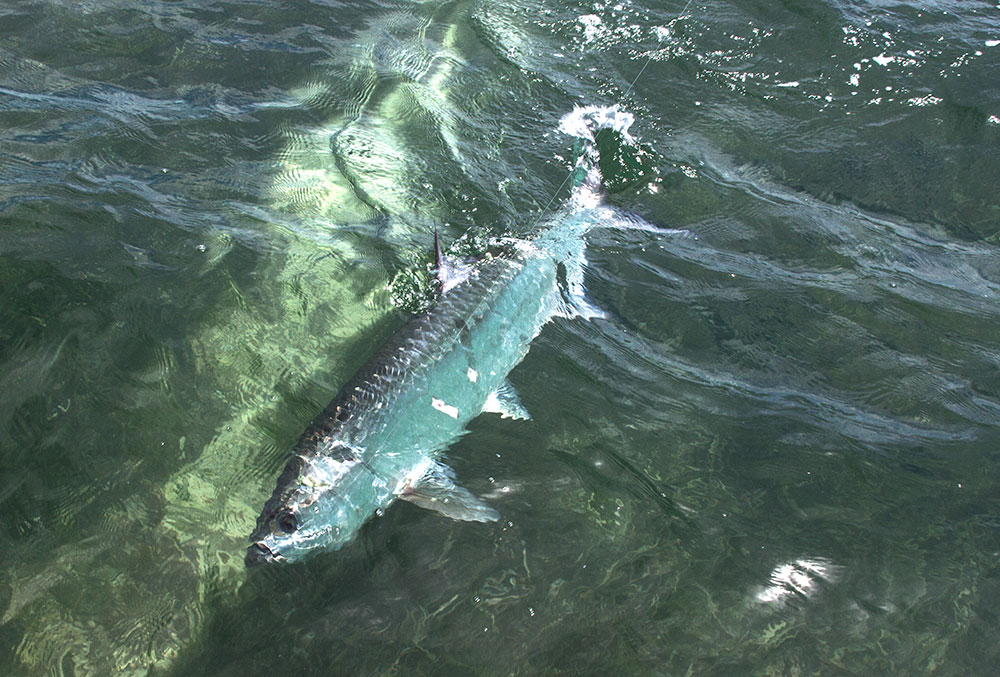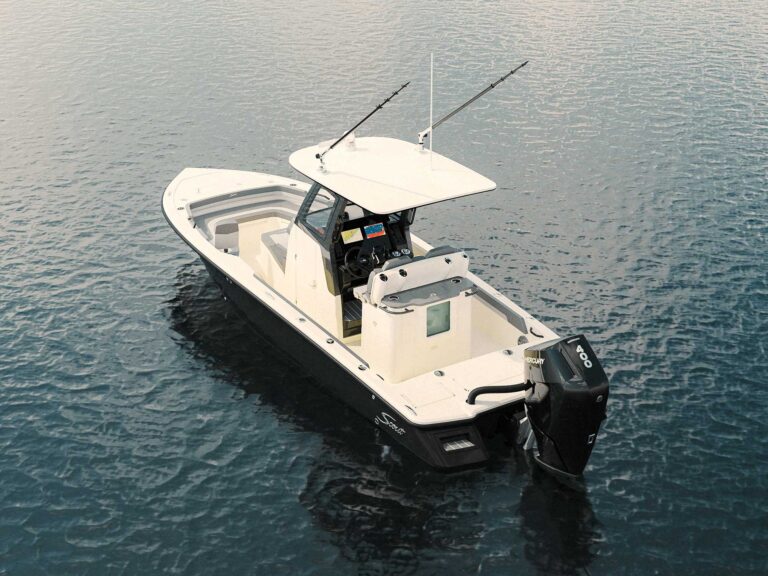
tarpon all about
Mention tarpon to an angler and he’ll inevitably conjure up images of leviathans that explode out of the water and clear the surface by a rod-length or more before crashing back into the drink with a massive splash.
Thanks to a propensity for spectacular jumps and the never-give-up fighting spirit that are clearly ingrained in its DNA, tarpon, also known as the silver king, has earned its royal reputation as one of the most challenging game fish. So challenging, in fact, that anglers measure the success of a tarpon outing not by the number of fish landed, but by the number of fish jumped (tarpon usually jump upon hookup).
Perhaps it is the degree of difficulty involved in pursuing such a formidable adversary, that makes countless fly and light tackle anglers from all over the globe flock to Florida and other top tarpon destinations, like Mexico’s Yucatan Peninsula and Belize, every year to test their skills against this fabled species.
Species: Tarpon (Megalops Atlanticus) have evolved very little since prehistoric times. In fact, were it not for the sharp dentures, a slightly more slender build and a Protocercal caudal fin (single and elongated tail) instead of a Homocercal (double or forked) tail, a predecessor species dating back 40 million years looked almost identical to the tarpon that today roams the flats and backcountry of the South Atlantic, Gulf of Mexico and the Caribbean. So little change over such a long time could only mean one thing: tarpon, as a species, are pretty close to perfection.
The fish’s muscular body is armored by thick circular scales as big as 2 to 3 inches across on mature adults. Large fins lend superb maneuverability and a powerful forked tail propels tarpon effortlessly to speeds of up to 35 mph. effortlessly Large eyes located near the top of the head and a protruding lower jaw are signs of a predator that attacks most prey from below. And despite the lack of teeth, a cavernous mouth protected by bone and cartilage enable tarpon to eat crustaceans and fin fish of considerable size in a single gulp.
Tarpon have dark backs that range from near black to green and even a dark gold. Their sides are silvery and they lighten to almost white near the belly. This fish can live as long as 60 years, and females — the larger gender — can reach 10 feet in length and 300 pounds in weight.
With the exception of a few oversize individuals, which often lead a pod of fish, most tarpon traveling in schools are sexually mature fish in the 40- to 100-pound range that make extensive spawning migrations along Gulf of Mexico and South Atlantic coasts from May through August. Smaller juveniles from 3 to 15 pounds usually congregate with others of similar size in residential canals, and secluded creeks and small bays in mangrove country, like those found in the Everglades, the Florida Keys and the Yucatan.
Unlike any other known saltwater game species, tarpon is endowed with a duct that connects the gas bladder to the esophagus. This anatomical feature allows the gas bladder to act as a lung and enables juvenile specimens to thrive in brackish ponds, mosquito ditches and various other small bodies of water where the low oxygen content keeps potential predators away.
Locations:
Although some tarpon reside in South Florida’s inshore waters year-around, the annual migration sends thousands of them traveling south to Key West and then north to Georgia and South Carolina on the Atlantic coast, and all the way to Texas on the Gulf Coast. Some believe the Gulf migration may even include Cuba and Mexico. Although it is likely that there are different bodies of fish that frequent the Caribbean, since the Cayman Islands, Puerto Rico, Dominican Republic and other island nations are known to harbor resident tarpon. Tarpon’s range also extends throughout Central and South America, as the fish are targeted by anglers in Nicaragua, Costa Rica, Panama, Colombia and Venezuela, and some have been found as far south as Brazil.
Techniques:
A variety of methods are used to target tarpon with both natural baits and artificials. The method that has garnered the most acclaim is sight-casting on the flats with a fly rod, but sight-casting is not constrained to the shallows and neither is it limited to the use of fly gear. Many anglers chase tarpon schools along the beaches and cast a variety of lures in their path. In addition, plenty of tarpon are caught using live crabs and shrimp, as well as mullet, pinfish, pilchards, threadfin herring, ladyfish and even squirrelfish, a favorite in Boca Grande Pass, Florida. The baits are either free-lined in the current, suspended under a float, or weighted to get them down if the fish are near the bottom in an inlet, pass or deep channel. Another productive deep water tactic is bottom fishing with dead catfish or a large chunk of ladyfish or mullet.
Tackle:
While even small tarpon are powerful and acrobatic, anglers should still tailor the heft of their gear — be it spinning, fly or conventional — to the size of the fish they intend to target. Of course, the angler’s level of expertise should also be taken into account when selecting the most suitable tackle.
For sight-casting at adult fish, a 7- to 7 ½-foot spinning rod and a reel that holds at least 250 yards of line is perfect. Novices may want to start with an outfit on the heavier side, say in the 20- to 30-pound-class. Seasoned veterans who know how to apply maximum pressure on a fish with lighter gear can opt for 12- to 17-pound.
Anglers going after small tarpon in the mangroves will, of course, want to scale down the tackle. Then 8- to15-pound gear is better suited for the task. And because the casts will be shorter and will probably take place in tight spaces, a slightly shorter 6 ½- to 7-foot rod will be best. And since baby tarpon won’t be making long runs, you can get by with smaller reels and more reduced line capacity. ** **
Fly fishing addicts should follow a similar rule of thumb. Using 11- and 12-weight outfits for adult tarpon is standard, though some experts may go down to a 10-weight when the fish are spooky and the wind is slight. For the little poons, 7- to 9-weight gear is just right.
And for tackling tarpon in the inlets, passes and bridge channels, a 20- to 30-pound conventional outfit or equivalent spinning gear is best. There’s not much casting involved then, so emphasis should be put on the lifting power of the rod, the line capacity of the reel and the smoothness of its drag.
It’s true that tarpon don’t have teeth, but they do have very coarse jaws that will wear through fishing line within seconds. Leaders are, therefore, a must. Tarpon also have great eyesight, so it’s a good idea to stick to fluorocarbon during daylight hours. At night, regular monofilament will do fine. For sight-casting at adult fish with either spinning or fly, 50- to 60-pound fluoro is ideal. When the fish are particularly skittish and you are fishing gin clear water in sunny conditions, scaling down to 40-pound may produce a few takes. For the juveniles just go down to 30. And if you are fishing bait, increase or drop the leader test according to the size of your offering and the tackle you are using. For a dollar-size crab or a pilchard on 20-pound gear, a 50-pound leader is perfect. If you are fishing a big mullet on heavier gear, you’ll want to go up to 60 or even 80.









